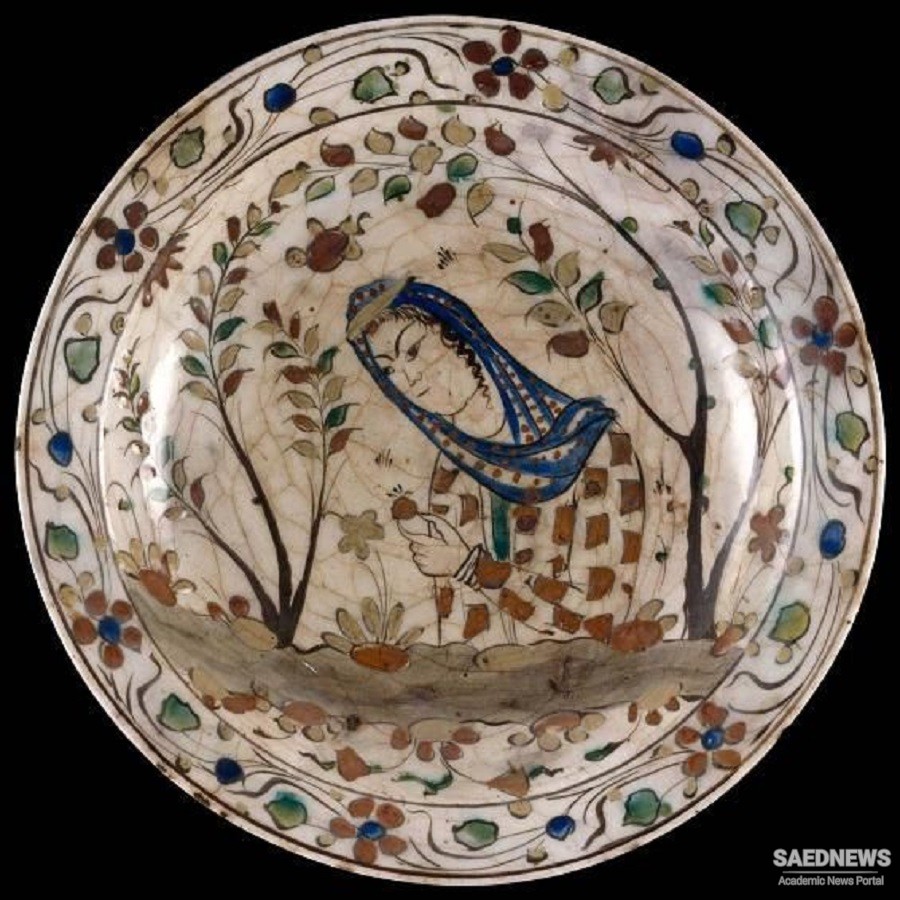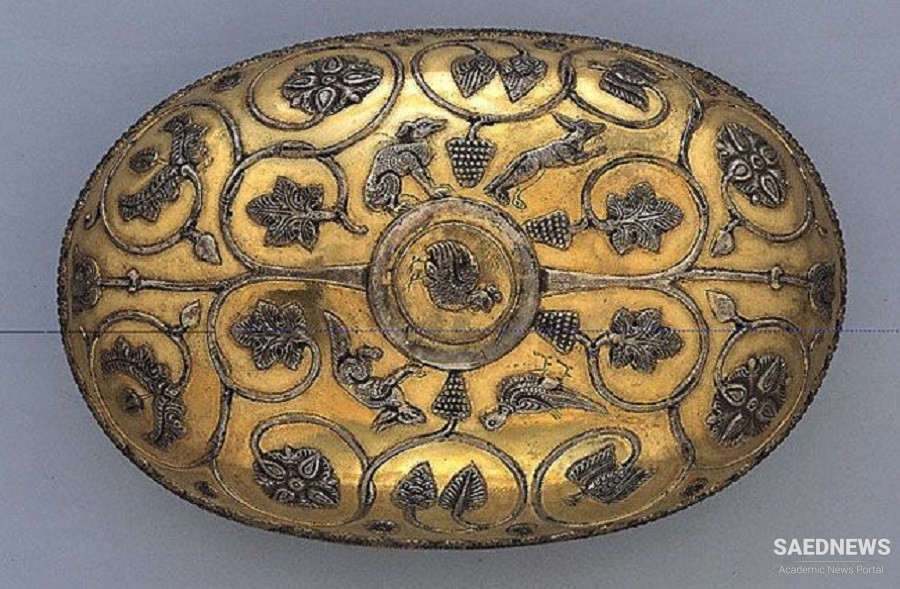An important role is played by ceramics, which, while remaining simple earthenware, bore stunning decorations. The first major development of this kind took place in Mesopotamia at the caliph’s court and included the use of ‘overflow’ glazes based on Chinese originals, white glazes in imitations of porcelain, some of which had blue under-glaze painting, and lustring in imitations of gold vessels. Perhaps because of the less strict adherence to the prohibition of precious metals or maybe because of the simpler cultural conditions, these inventions were at first used only rarely in Persia. Only in Seljuk times do we see the emergence of ceramics that are definitely luxury wares, although there is an exception to this in Nishapur and the Samanid district, of which more will be said below. Until then most of the ceramics used were coarser pieces, in northern and western Persia especially, which differed significantly from one place to another. They frequently had figured decorations, usually animals carved under a single- or multi-coloured glaze, | which continued many of the motifs from Sasanid silverware (Source: Iran in Early Islamic Period).



 Belles Letters and Music: Essential Elements of Islamic Culture in Persia
Belles Letters and Music: Essential Elements of Islamic Culture in Persia














































